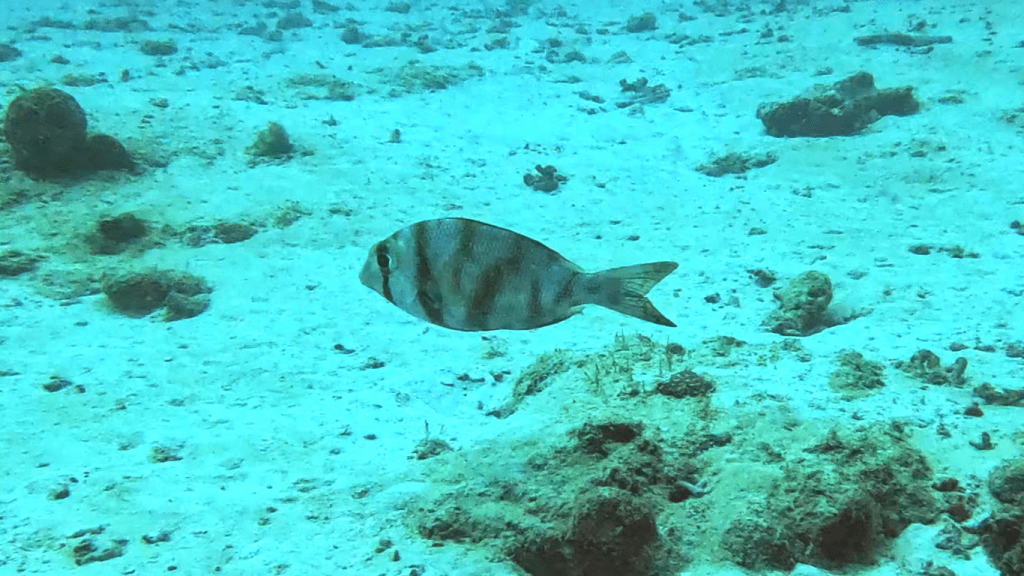Zebra sea-bream

The Zebra sea-bream (Diplodus cervinus), also known in Russian as 'toothed seabream' or 'toothed sargo', belongs to the seabream family (Sparidae) and is distributed across various regions of the world's oceans. The species can be classified into three subspecies based on their habitats, sometimes considered separate species:
- Diplodus cervinus cervinus – inhabits the Eastern Atlantic from the Bay of Biscay and the Mediterranean Sea to South Africa, including Madeira and the Canary Islands, but excluding Cape Verde, Senegal, and the Gulf of Guinea.
- Diplodus cervinus hottentotus [Note: Source listed D. hottentotus, often considered a subspecies of cervinus] – inhabits the Indian Ocean off the coast of Oman.
- Diplodus cervinus omanensis [Note: Source listed D. omanensis, often considered subspecies D. c. omanensis or synonym of D. c. hottentotus] – inhabits the western Indian Ocean from Mozambique to South Africa.
Although the subspecies have some differences in their distribution ranges, their appearance and behavior are similar, allowing them to be considered as a single species. In the English-speaking world, this species is known as the Zebra sea-bream, accurately reflecting its characteristic striped coloration.
The origin of the Russian name 'karas-baraban' (drum seabream) remains unclear, but it is used as such in Russian literature. The variation in color bands can change depending on the habitat. The average size of the fish is between 15 and 30 cm, with a maximum size of up to 55 cm.
The body of the Zebra sea-bream is deep, laterally compressed, with a pointed snout and powerful lips. Broad dark bars on the body resemble the stripes of a zebra. This species possesses strong teeth, as its diet includes zoobenthos such as sea urchins, worms, and bivalve mollusks, whose shells need to be crushed.
The Zebra sea-bream lives in small groups in coastal reef zones, typically staying close to the bottom. Like many other seabream species, it prefers rocky formations and the transitions to sandy areas, where its main food sources are found.
